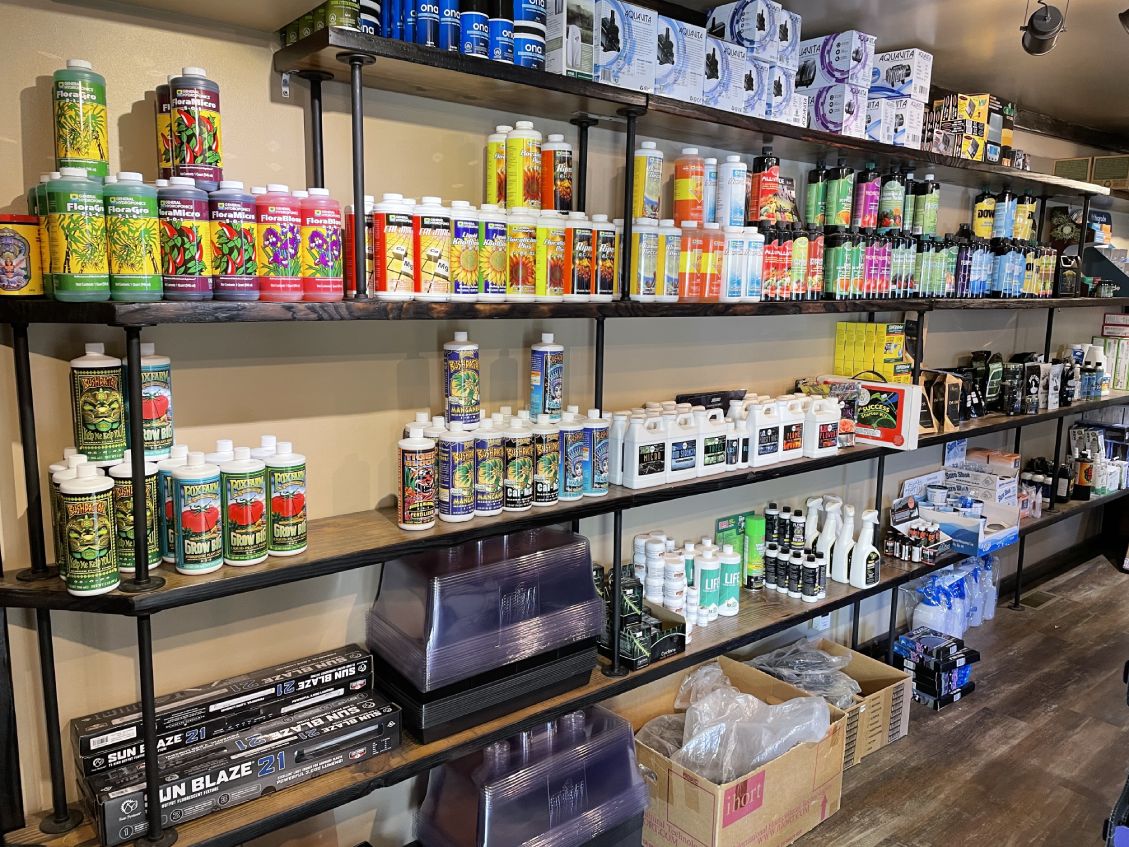Opening the Potential of Hydroponics: Comprehending Its Makes Use Of and Different Types
Hydroponics, an approach of cultivating plants without soil, has actually amassed increasing interest for its potential to reinvent farming and horticulture methods. The accuracy control over nutrient distribution, water use, and environmental elements supplies a peek right into a future where food manufacturing can be maximized in various settings. As we navigate with the complex landscape of hydroponic systems and strategies, it ends up being obvious that each strategy holds distinct advantages and limitations. By unwinding the varied uses and kinds of hydroponics, we can reveal a world of opportunities that might improve just how we picture lasting farming and horticulture techniques.
Advantages of Hydroponic Equipments

Another advantage of hydroponic systems is the capacity to expand plants in a smaller sized room. By removing the demand for dirt, plants can be expanded up and down or in piled systems, maximizing making use of available space. This is particularly advantageous in urban areas or areas with minimal cultivable land. Hydroponic systems reduce the threat of soil-borne diseases and pests, as there is no dirt to nurture these risks. This results in healthier plants and lowers the demand for dangerous pesticides, making hydroponic farming a much more ecologically friendly and sustainable alternative.
Typical Utilizes in Farming

Provided the effective water preservation and space-saving advantages of hydroponic systems, it is apparent that these ingenious agricultural techniques have discovered typical uses in different sectors of agriculture. In conventional farming, soil-based farming can be labor-intensive and land-consuming. Hydroponics provides a service by allowing crops to be grown without dirt, decreasing water usage by as much as 90% contrasted to conventional farming approaches. This makes hydroponics particularly suitable for regions encountering water deficiency or minimal cultivable land. The controlled environment of hydroponic systems makes it possible for year-round farming, offering a constant supply of fresh produce no matter of external climate problems.
Hydroponics is generally used for growing a selection of plants, including leafy eco-friendlies, tomatoes, cucumbers, peppers, natural herbs, and strawberries. Furthermore, hydroponic systems are used in study and instructional settings to study plant nutrition, growth, and cultivation techniques.
Exploring Various Hydroponic Strategies
Hydroponic systems provide an array of techniques that cater to various plant types and growing goals. Additionally, the Ebb and Circulation system, also recognized as the Flood and Drainpipe system, intermittently floodings the plant roots with nutrient option, allowing for oxygenation throughout draining durations. Each of these techniques showcases the convenience and effectiveness of hydroponic systems in boosting crop development and return.
Comparing Numerous Hydroponic Solutions
Exploring the effectiveness and yield enhancement strategies in hydroponics leads us to compare different hydroponic systems readily available for crop growing. Each hydroponic system has its unique attributes, advantages, and constraints, making it important for farmers to select the most ideal system based on their particular demands and constraints.
One of the most common hydroponic systems is the nutrient movie technique (NFT), where a thin film of nutrient service constantly streams over the plant origins. In contrast, the deep water read this article culture (DWC) system submerges plant roots directly right into the nutrient solution, offering adequate oxygen and nutrients.
An additional preferred hydroponic system is the ups and downs (or flooding and drainpipe) system, which regularly floods the plant roots with nutrient service before draining it. This cyclic procedure ensures proper oygenation for the origins while providing nutrients effectively. Furthermore, the aeroponic system suspends plant origins airborne and mists them with a nutrient service, promoting quick development and high oxygenation degrees. Farmers seeking a flexible system that reduces water usage frequently opt for aeroponics. By understanding the distinctions between these hydroponic systems, growers find this can make enlightened decisions to make the most of plant return and quality.
Technologies in Hydroponic Innovation
With advancements in hydroponic innovation, the agricultural industry is seeing a change towards extra sustainable and reliable growing approaches. Innovations in hydroponic innovation are revolutionizing the method plants are grown by making best use of returns, preserving resources, and reducing environmental influence. One key advancement is the development of wise hydroponic systems that utilize sensors and automation to monitor and readjust environmental problems such as pH levels, nutrient focus, and light direct exposure in real-time. These systems allow accurate control over expanding problems, leading to ideal plant development and greater plant yields.
One more notable improvement is the assimilation of upright farming strategies with hydroponic systems, permitting the cultivation of crops in stacked layers. This vertical method maximizes room utilization, making it perfect for urban environments where land availability is limited - The Indoor Earthworm. Additionally, using advanced LED lighting systems tailored to details plant requirements has actually boosted power performance and improved growth rates in hydroponic setups
Advancements like these are driving the advancement of hydroponics, making it a sustainable and extremely appealing option for modern-day agriculture.
Conclusion
Finally, hydroponics uses various advantages in agriculture and has various strategies and systems that can be used to optimize its possibility. Technologies in hydroponic innovation remain to improve performance and sustainability in food production. By recognizing the uses and various types of hydroponic systems, cultivators and farmers can open the full possibility of this ingenious method of expanding plants without soil.
Furthermore, hydroponic systems permit for much better control over nutrient degrees, pH balance, and ecological conditions, leading to much healthier plants and higher yields.
